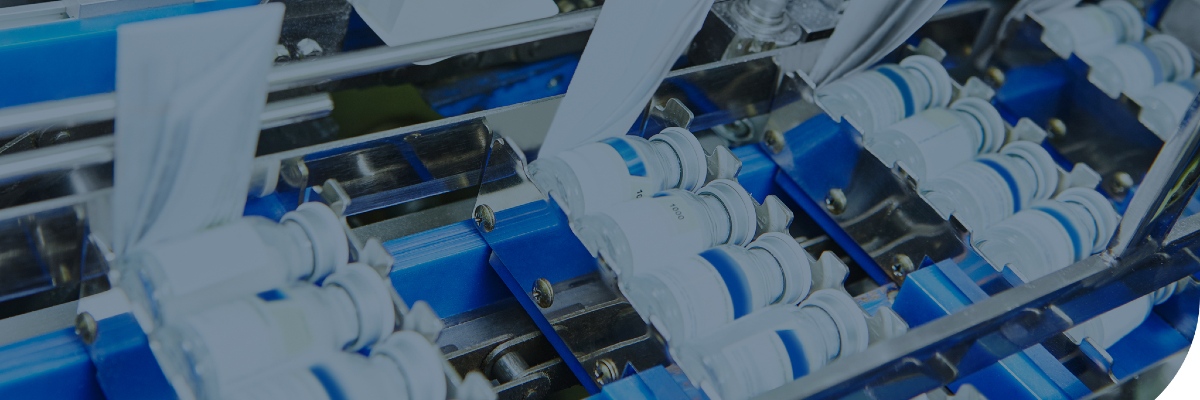Recent studies project spending on technologies and services for digital transformation will hit $2 trillion by 2022. Process manufacturing is expected to lead the way. Market dynamics such as increased globalization, shifting consumer expectations, and changing regulations have complicated traditional formulas for competition and growth. Digital transformation is the most impactful way to accelerate business activities, processes, and competencies to deliver results in the new landscape.
The rise of digital technologies and transformations impacts all industries, including consumer packaged goods (CPG) companies. It permeates all facets of business, including product packaging. Whether a product is found on a physical or digital shelf, packaging plays a key role in marketing to consumers, and companies must continually look for ways to move their products through the value chain, getting to market quickly and accurately.
McKinsey research shows CPG is one of the least digitally advanced industries. However, those that successfully implement digital transformations find the rewards to be sizable. For example, McKinsey estimates “costs can be cut by up to 90%.” Let’s look at the primary reason packaging digital transformations fail, and five keys to success.
The Primary Reason Digital Transformation Fails
Let’s face it, change is challenging. Especially in an enterprise setting. It’s easy to think the current state, no matter how dysfunctional it may be, is working. To better your future state, you must continuously improve and fine-tune your process. Using label and artwork management technology increases the amount of data generated during the packaging process. Organizations leverage this data to unlock new opportunities, such as improving product packaging responsiveness, driving consistency, and enhancing quality for better consumer experience. Businesses can measure the ROI of digital transformation and establish a business case.
Define Your Packaging Digital Strategy and Build a Business Case
To initiate digital transformation, you first need to build a business case. A business case helps you define the objectives driving your project. To start, think about the current state of your business and map out your challenges and opportunities. Do you need to provide easier access to information to improve decision making? Can you enhance product packaging responsiveness? Do you have internal issues with current systems? Or do you need to connect your process with external partners, such as agencies, printers, and converters? Using a roadmap such as the Digital Maturity Model for Brand Packaging Processes helps leaders better determine the current state and visualize the future.
Embrace the Change
After you have clearly defined your digital strategy, created your business case, and identified the technology necessary to achieve your transformation, it’s time to think about change management. First and foremost, you need to get executive sponsorship for your digital initiative, as well as commitment and alignment from key decision makers in your organization. Their commitment must then extend to middle managers, who act as change agents and lead by example. A thorough mapping of all stakeholders impacted by the new digital strategy helps in analyzing level of engagement, skills gap, and points of possible resistance. To further increase user adoption rates, involve the design, packaging, marketing, IT, and other relevant teams in the technology purchasing process. As daily users of the software, they’re likely to have insights into what the software requirements should include.
Organize Your Assets, Data and Teams for Digital Transformation Success
According to Kurt Cagle of Cognitive World, metadata management is a priority in digital transformation. This is an integral function – what you do with your information will determine your ability to yield results from your transformation, including packaging innovation, productivity, compliance, and growth. For packaging organizations, this means making sure all elements of your packaging data, from artwork to ingredient lists, are accessible, usable, understandable, and trustworthy across applications in every business function – from the C-level to the front line – every day.
It is important to start by understanding the endgame (or “what good looks like”) for your organization from a technology software or systems perspective. Ask yourself the following questions:
• What systems do you already own?
• What do you need to own?
• What can be outsourced?
• What needs to be connected (exchange metadata and files) to what?
Then you can identify which systems are critical/priority versus which systems can wait. Understanding the end goal of your interconnected systems enables you to implement these critical solutions with future connectivity in mind. Implementing a Digital Asset Management (DAM) software is one way to achieve this kind of control over your metadata. A DAM stores and organizes final, approved digital content for packaging labels and artwork, including the associated metadata, bridging all product lifecycle-related technologies together.
A content management solution develops and houses all packaging and labeling metadata in your process. It collects, manages, and enriches your product information, meaning you always have up-to-date content matched to what’s on-shelf. The workflow also helps you distribute the right content to your sales teams, suppliers, and e-commerce/retail channels. It’s a small but important contributor to digital transformation efforts, streamlining the content creation process, and providing a quick way to prove the value of digital systems.
Leverage Data Analytics and Business Intelligence
Those who see packaging digital transformation as a competitive advantage know the benefits of gathering, analyzing, and sharing data across all business functions. For example, tracking a simple metric such as the time to approve a package can uncover process inefficiencies that delay a product getting to the shelf. Digital transformation provides the necessary toolset to determine the root cause of problems so companies can implement appropriate countermeasures and further accelerate business operations without error. Label and artwork management technology produces analytical reports and enables data sharing allowing companies to seamlessly identify cost reduction opportunities (such as artwork approval bottlenecks) and troubleshoot issues (such as compliance errors) to improve time to market.
Realize the Transformation is Ongoing
Finally, after implementing your digital transformation, it’s possible users will fall back on old habits. Sustain your implemented changes through continuous monitoring of KPIs and other change-related indicators (such as the DICE framework), identifying bottlenecks, and rapidly implementing countermeasures.
It’s Worth the Work
Digitally transforming your packaging process has the potential to drive overall business revenue and growth. However, it may seem like a daunting task. For those unsure of where to start, consider aligning with a technology partner having extensive experience implementing digital packaging transformations. Esko provides packaging technologies to improve your process, increase speed-to-market, integrate with pre-existing systems, and create synergy across internal and external stakeholders. To learn more about how you can digitally transform your packaging process, contact us!










